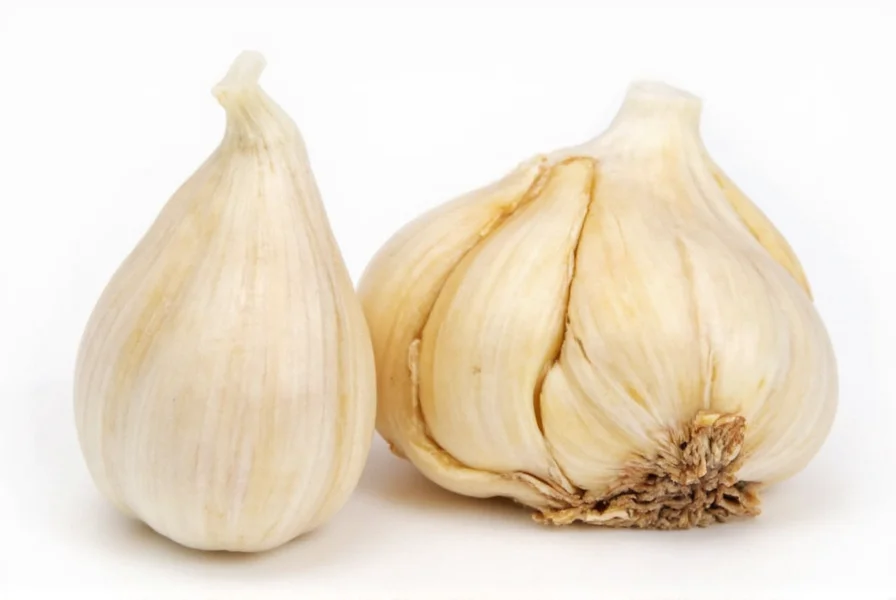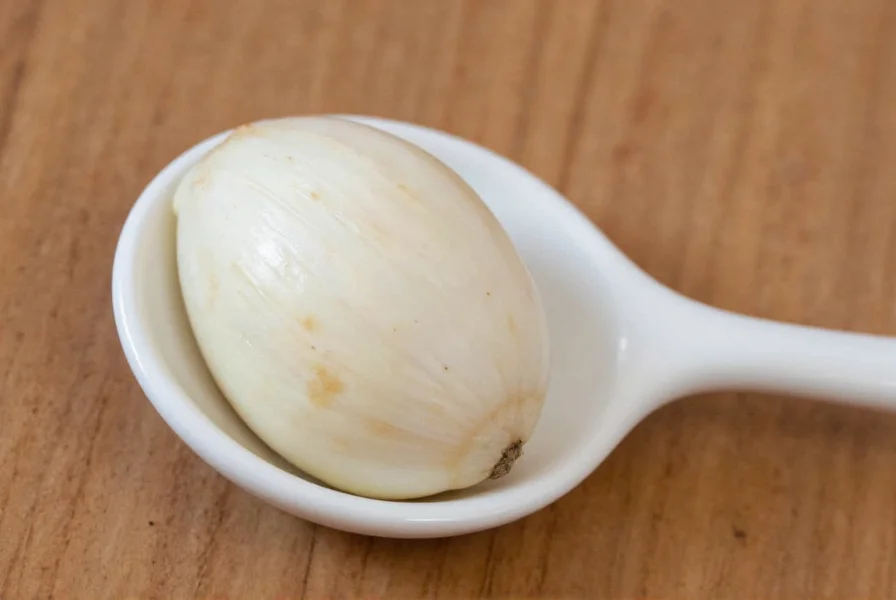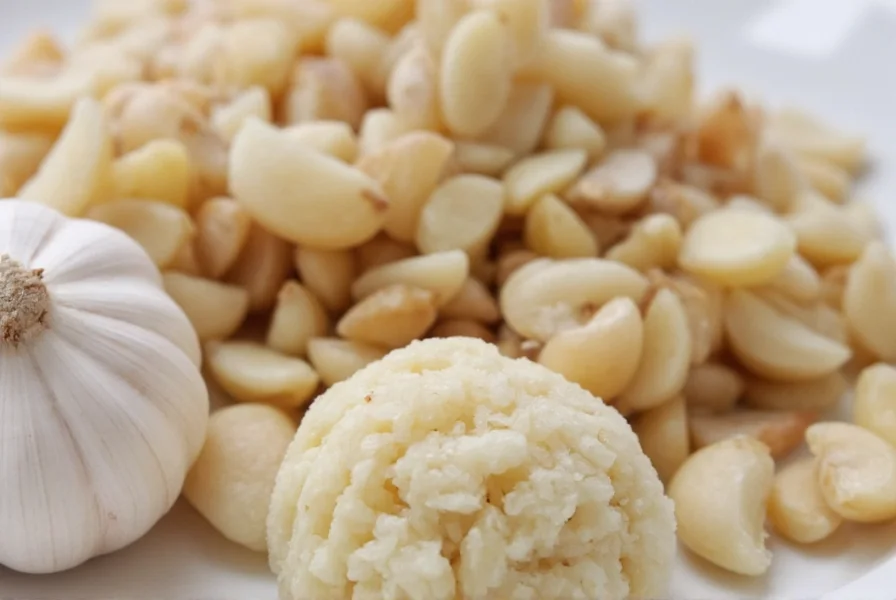Understanding garlic conversions is essential for precise cooking and recipe execution. When a recipe calls for a specific number of cloves but you're working with pre-minced garlic (or vice versa), knowing the exact equivalent ensures your dish achieves the intended flavor profile without becoming overpowering or too mild.
Garlic Conversion Fundamentals
The standard conversion ratio serves as your culinary baseline: one average-sized garlic clove yields about one teaspoon of minced garlic. This measurement assumes proper preparation technique - removing the papery skin and core sprout before mincing. When measuring minced garlic, lightly pack it into your measuring spoon without excessive compression for accurate results.
Garlic size significantly impacts conversions. Grocery store garlic typically comes in three size categories:
| Garlic Size | Minced Measurement per Clove | Equivalent to 2 Cloves |
|---|---|---|
| Small | ¾ teaspoon | 1½ teaspoons |
| Medium (standard) | 1 teaspoon | 2 teaspoons |
| Large/Jumbo | 1½ teaspoons | 3 teaspoons (1 tablespoon) |
Practical Measurement Tips
For home cooks, precision matters most in delicate dishes like aiolis, vinaigrettes, or subtle sauces where garlic flavor dominates. In heartier preparations like stews or roasted vegetables, slight variations won't significantly impact the final result. When substituting jarred minced garlic for fresh, remember that commercial products often contain preservatives that slightly alter flavor intensity.
Professional chefs recommend these techniques for accurate garlic measurement:
- Use a microplane grater for consistent, fine mince that measures more accurately than hand-chopped
- When converting whole cloves to minced, always remove the bitter green germ sprout first
- For recipes requiring multiple cloves, mince all garlic together rather than measuring each clove individually
- Store freshly minced garlic in an airtight container with a teaspoon of olive oil to prevent browning

When Precision Matters Most
Certain culinary applications demand exact garlic measurements. In mayonnaise-based sauces, aiolis, and delicate dressings, even a half-teaspoon difference can dramatically affect flavor balance. Conversely, in long-simmered tomato sauces or braises, garlic mellowing during cooking makes precise measurement less critical.
Consider these conversion scenarios:
- Garlic powder substitution: ⅛ teaspoon garlic powder equals one fresh clove
- Garlic salt adjustment: Use ¼ teaspoon garlic salt per clove, but reduce other salt by ⅛ teaspoon
- Roasted garlic: One roasted clove equals approximately 1½ teaspoons fresh minced
Common Measurement Mistakes to Avoid
Many home cooks make these garlic measurement errors that compromise recipe results:
- Using heaping rather than level teaspoons for minced garlic
- Forgetting to account for garlic size variations between seasons
- Substituting jarred minced garlic 1:1 with fresh without adjusting for potency differences
- Measuring garlic before removing the papery skin and core
When working with pre-minced garlic from a jar, remember that commercial products often contain citric acid or other preservatives that slightly mute the fresh garlic flavor. You may need to increase the amount by 25% to achieve equivalent flavor intensity.

Storage and Freshness Considerations
Freshly minced garlic maintains optimal flavor for only 1-2 hours at room temperature. For meal prep, store minced garlic in an airtight container with a small amount of olive oil in the refrigerator for up to 5 days. Freezing portions in ice cube trays then transferring to freezer bags preserves garlic flavor for up to 3 months.
When using frozen minced garlic, add it directly to hot dishes without thawing to prevent texture changes. The conversion ratio remains consistent whether using fresh, refrigerated, or frozen minced garlic.
Practical Application in Recipes
Understanding how much minced garlic equals 2 cloves becomes particularly valuable when adapting recipes. Consider these real kitchen scenarios:
- When doubling a pasta sauce recipe that calls for 6 cloves, you'll need 2 tablespoons (6 teaspoons) of minced garlic
- For a garlic bread requiring 4 cloves, use 4 teaspoons (1 tablespoon plus 1 teaspoon) of minced garlic
- When making aioli with 3 cloves garlic, measure 3 level teaspoons of freshly minced product
Professional kitchens often prepare garlic in bulk for efficiency. Knowing the garlic clove to minced garlic conversion allows chefs to quickly calculate how many heads of garlic they'll need to yield specific quantities of minced product for large batches.
FAQ: Garlic Measurement Questions
How many tablespoons is 2 cloves of minced garlic?
Two medium garlic cloves equal 2 teaspoons of minced garlic, which is equivalent to ⅔ of a tablespoon. Since 3 teaspoons make 1 tablespoon, 2 teaspoons represents approximately two-thirds of a tablespoon.
Does the conversion change if I use a garlic press?
The conversion remains consistent whether you mince by hand or use a garlic press. One medium clove still yields approximately 1 teaspoon of minced garlic regardless of preparation method. However, garlic pressed through a press may release slightly more juice, potentially increasing volume by about 10%.
How much jarred minced garlic equals 2 fresh cloves?
Use 2¼ teaspoons of jarred minced garlic to replace 2 fresh cloves. Commercial minced garlic often contains preservatives that slightly reduce potency, so increasing by 10-15% compensates for flavor differences while maintaining proper seasoning balance.
Can I substitute garlic powder for fresh cloves in equal amounts?
No, garlic powder is significantly more concentrated. Use ¼ teaspoon garlic powder per fresh clove required. For 2 cloves, use ½ teaspoon garlic powder and reduce other salt in the recipe by ⅛ teaspoon since garlic powder often contains salt.
Why does my minced garlic measurement vary from recipe to recipe?
Garlic size varies by season and growing conditions. Spring garlic tends to be smaller than fall harvest garlic. Always consider your actual cloves' size when converting - small cloves yield ¾ teaspoon each while jumbo cloves can produce 1½ teaspoons of minced product.











 浙公网安备
33010002000092号
浙公网安备
33010002000092号 浙B2-20120091-4
浙B2-20120091-4